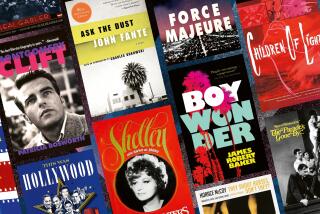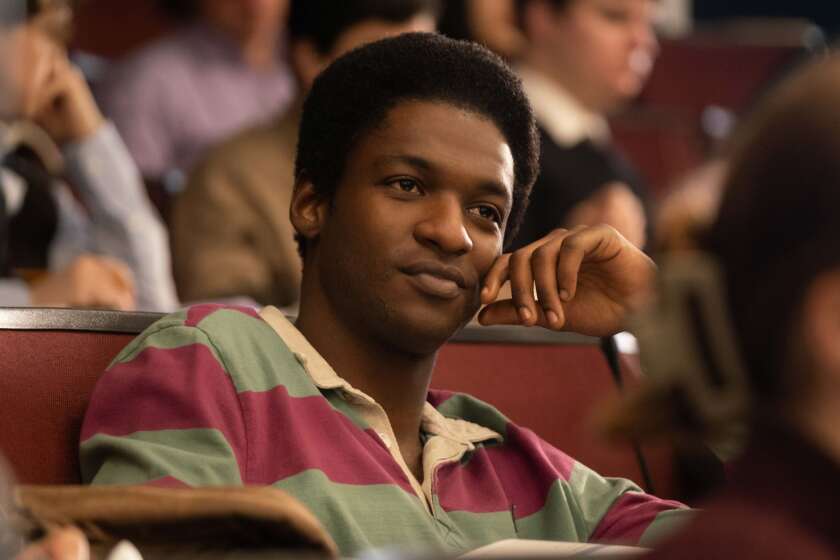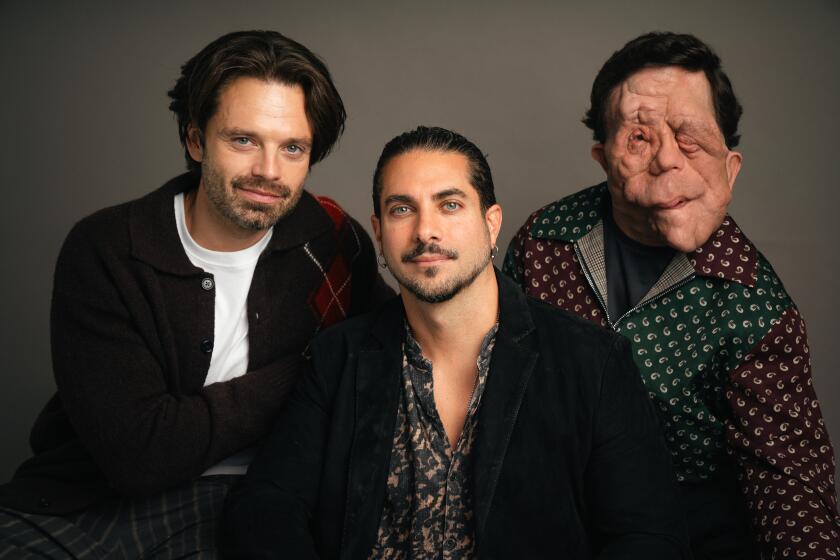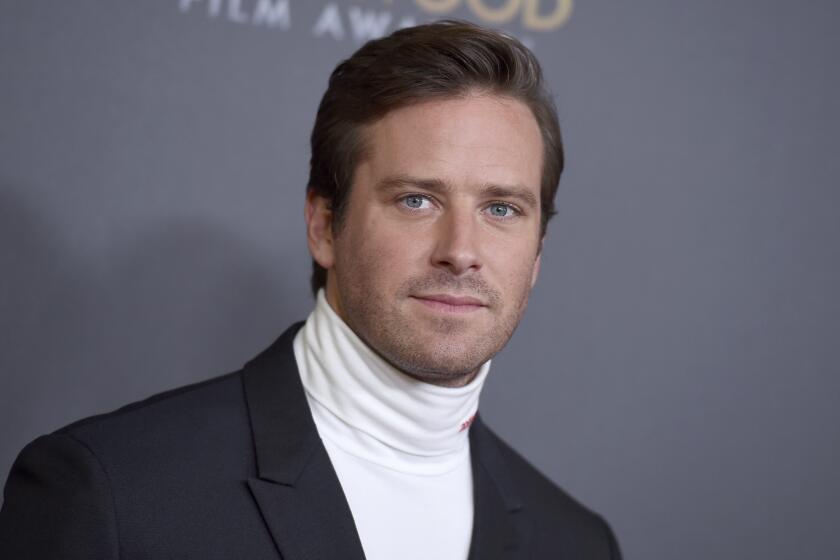Timeless ‘Casablanca’
Check out the movie-viewing habits of post-baby boomers and you can get the impression they believe significant filmmaking began with 1977’s “Star Wars,” or maybe “The Godfather” five years earlier. Dig deeper, though, and chances are you’ll find the one vintage title that defies this perception: “Casablanca,” the 1942 classic starring Humphrey Bogart and Ingrid Bergman.
“Everybody seems to have seen ‘Casablanca,’ ” says film critic Roger Ebert, who supplies audio commentary for Warner Home Video’s beautiful new two-disc DVD set ($27) of the Oscar winner that arrives in stores today. “It seems to have escaped the ordinary categories: people who don’t like old films. People who don’t like black and white. It doesn’t matter what you don’t like, you like ‘Casablanca.’ ”
“It is the fluke that works,” adds film historian Rudy Behlmer, author of “Inside Warner Bros.,” who supplies the other commentary track on the collector’s edition. “And then to compound it, the fluke works in perpetuity, which, of course, you wouldn’t think would happen. World War II? Letters of transit? Who in 1960, ‘70, ‘80, let alone 2003, cares? You can say there are a lot of reasons why it works, but in the final analysis it was a fluke. I think that is what makes it so intriguing.”
So most people know the basic plot. “Casablanca” revolves around Rick Blaine (Bogart), a hard-bitten, cynical American with a past operating a popular cafe in the Moroccan city. His life is turned upside down with the arrival of his old flame, Ilsa Lund (Bergman), whom he had loved years before in Paris, where she never showed up when he arranged for the two of them to escape when the Nazis entered the city. And now Ilsa is in Casablanca with her husband, the saintly Victor Laszlo (Paul Henreid), who is a famous Czechoslovakian freedom fighter. The Laszlos want the two letters of transit Rick has in his possession that will allow them safe passage to Lisbon, and then on to the U.S., presumably.
The supporting cast featured some of the best actors working in Hollywood -- several of whom had emigrated from Europe because of the war -- including Claude Rains, Peter Lorre, Sydney Greenstreet, Dooley Wilson, Conrad Veidt, Marcel Dalio and S.Z. Sakall. There was the superlative use of the 1931 tune “As Time Goes By,” the crackling dialogue by Julius J. Epstein and Philip G. Epstein and Howard Koch (who based the film on an unproduced play, “Everybody Comes to Rick’s,” by Murray Burnett and Joan Alison) and the moody direction by Michael Curtiz. And don’t forget the enormous contribution of producer Hal B. Wallis, who put the whole package together.
The film, which was released during the height of World War II, went on to win Oscars for best picture, director and screenplay and turned Bogart from a well-respected actor who generally played the shamus or the bad guy into a full-fledged romantic lead.
The film is filled with lines that have become part of the popular lexicon including “Here’s looking at you kid”; “I stick my neck out for nobody”; “It doesn’t take much to see that the problems of three little people don’t amount to a hill of beans in this crazy world”; “We’ll always have Paris”; and “Louis, I think this is the beginning of a beautiful friendship.”
Woody Allen wrote a hugely successful play and film, “Play It Again, Sam,” revolving around Bogart’s persona in the movie and a few years ago, “Casablanca” was named the No. 2 greatest film of the 20th century by the American Film Institute. “Citizen Kane” was No. 1.
Though Warner Bros. considered it an “A” picture, no one thought during production they were making anything special. The stories surrounding the chaotic production are legendary. The script, for example, was not complete when the film began production in early 1942, leaving the actors wondering whom Ilsa would leave with on the plane at the end: Rick or Victor?
“It was never a movie she referred to,” says Bergman’s eldest daughter, newscaster Pia Lindstrom, who appears in a documentary about the film’s production that’s included with the new DVD release. “She never said, ‘It was such a joy to make that movie, hope you enjoy seeing it and it’s really great.’ It wasn’t and she didn’t. It was never talked about -- ‘Casablanca.’ She wanted to do ‘For Whom the Bell Tolls.’ ”
Because Bogart and Bergman light up the screen in their romantic scenes in the film, audiences have surmised over the years that there must have been an attraction between the two off screen. Lindstrom says that is untrue. “My mother had no relationship with Humphrey Bogart,” she says.
“He was in his trailer and he had his own personal problems.”
Bogart was in the midst of a disastrous marriage to actress Mayo Methot and their often alcohol-induced fights were so well known in Hollywood that they were called the “Battling Bogarts.” Methot was one of those who believed Bogart was having an affair with Bergman. “She was jealous and he was depressed,” says Lindstrom.
“So whatever people see on the screen between them is obviously acting. There was no attraction between my mother and Humphrey Bogart but on screen there looks like there is a lot of subtext and a lot happening. That is because they were professionals.”
Bogart’s son, Stephen Bogart, who also appears in the documentary, says that the role of Rick Blaine is the one for which his father is most remembered.
“It is the one that jumped him out of the detective, gangster milieu, and put him in another stratosphere,” says Bogart. “That is probably why he took that part, because I think he wanted to show he could do other things and obviously we found out he could with the myriads of characters and the things he could do. I think this is the one that catapulted him to superstardom.”
Bogart, who was 8 when his father died in 1957, says that he doesn’t know if “Casablanca” was the actor’s favorite film. “I don’t know if he had any love for any movie over any other movie, but this had to hold a special place in his heart because it allowed him to do the things he wanted to do.”
Ebert, who first saw “Casablanca” as a college student at the University of Illinois, believes the film works so well due to the sacrifice Rick makes at the end of the film. “I think if she had gotten on that plane with Humphrey Bogart, the movie would have closed in a week,” he says. “The understated bravery which Humphrey Bogart and Claude Rains face, the fact that the Nazis are going to arrive at any moment and probably haul them away as he puts her on the plane with her love, that he finds that he can be patriotic, that he does care about America, that he is not the cynical, aloof, detached person that he likes to pose as.... That kind of goodness is, I think, really appealing to people, much more so than the romance. The romance exists only so it can be overcome by higher feelings.”
Besides a beautiful new digital transfer of “Casablanca,” audio commentaries and documentaries (both hosted by Lauren Bacall), the discs also include 10 minutes of recently discovered outtakes and a deleted scene, a radio version of the movie starring Bogart and Bergman, the Bugs Bunny cartoon, “Carrotblanca,” scoring sessions, trailers, stills, photos, studio correspondence and the first episode of the short-lived 1955 TV series based on the film starring Charles McGraw as Rick.
More to Read
Only good movies
Get the Indie Focus newsletter, Mark Olsen's weekly guide to the world of cinema.
You may occasionally receive promotional content from the Los Angeles Times.











